Religious objects

“Monstrance”

Gold vessel, often in the shape of the sun, where the consecrated host is placed to be displayed to the adoration of the faithful.
“Relic”
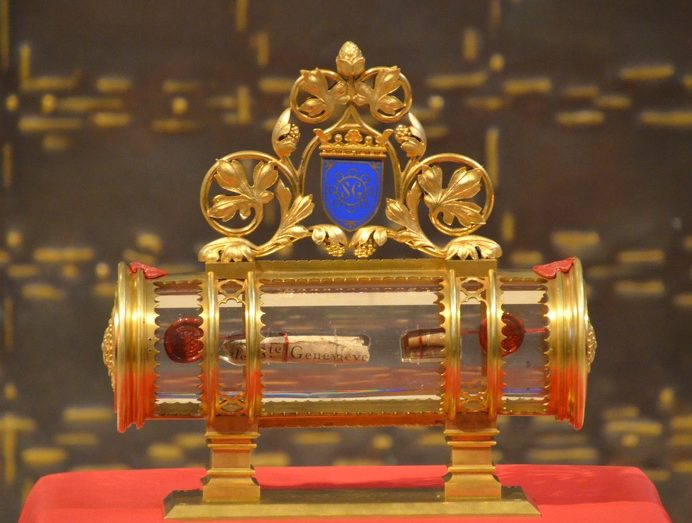
Remains of the body, or objects that belonged to a martyr or saint and are worshipped.
From its origins, the body of the martyrs, configured to that of their Master and Lord, has been the object of great veneration. In 787, the second Council of Nicaea legitimated the veneration of relics: they were then presented during solemn processions, bringing together all constituted bodies, religious and civil, around a ritualised process. The development of pilgrimages in the Middle Ages contributed to their influence throughout Christendom.
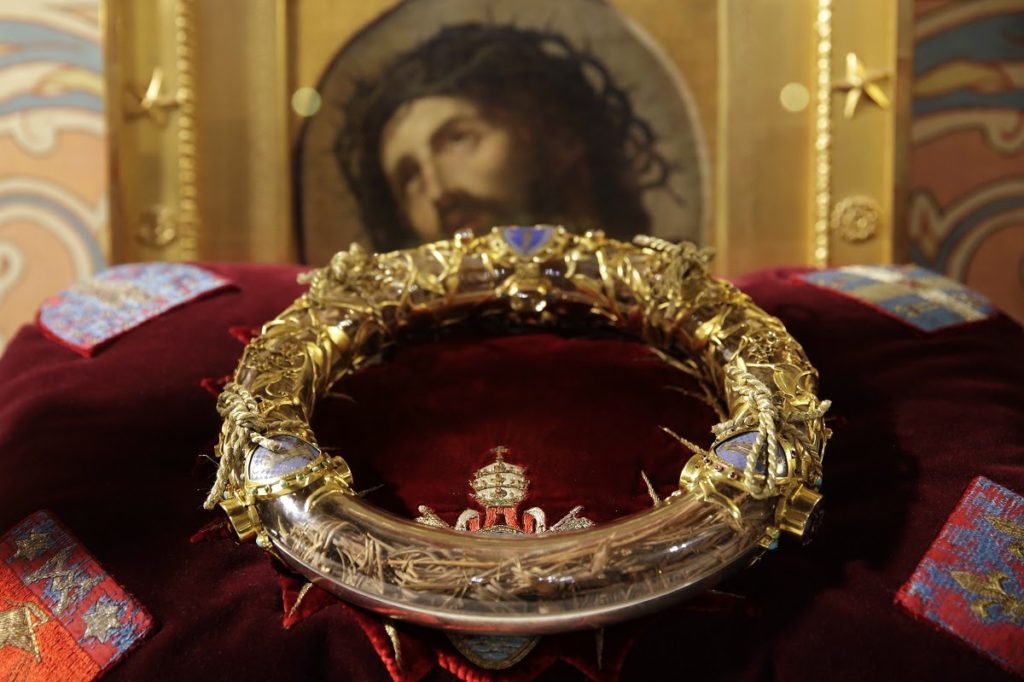
Notre-Dame de Paris has the particular honour of housing the Insignia Relics of the Passion, which were brought from Jerusalem by Saint Louis in 1239. They include the Crown of Thorns of Christ, a fragment and a nail from the Holy Cross.
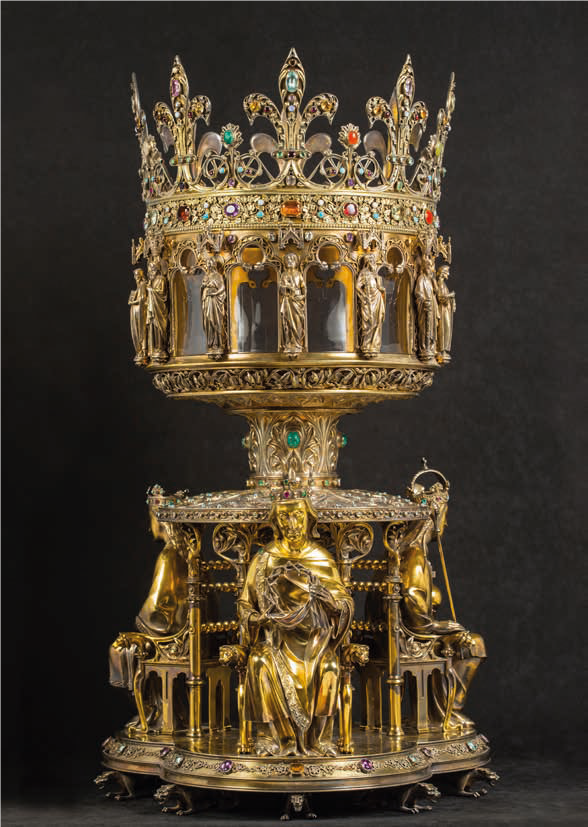
After their “invention”, i.e etymologically their discovery, the relics were “raised” in reliquaries intended to preserve and exhibit them to the faithful. These precious caskets adopt variable shapes and sizes.
Designed by Viollet-le-Duc, the reliquary of the Crown of Thorns was presented as a reliquary of medieval inspiration. The relic was visible in a rock crystal crown with openwork and surrounded by a rich carved programme.
The cockerel, which overlooked the spire before the fire, is also a reliquary, as it contains remains of Saint Geneviève and Saint Denis.
“Tabernacle”
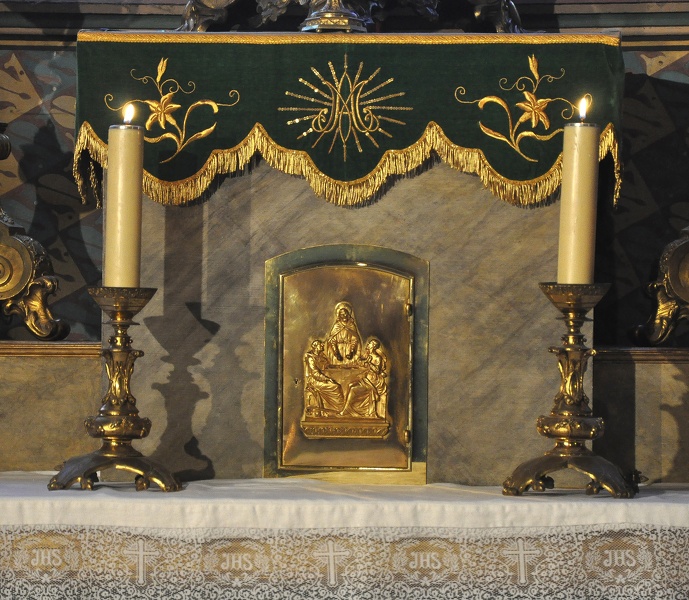
Small cupboard, generally fixed in the centre of the altar, where the priest stores the ciborium containing the consecrated hosts. This work of carpentry, goldsmithery, marble etc. is often accompanied by a red lamp symbolising the Eucharistic presence of Christ. The tabernacle has a triple function: Eucharistic reserve, sign of the presence of Christ and place of devotion.
“Sacred vessels” : ciborium, chalice, paten
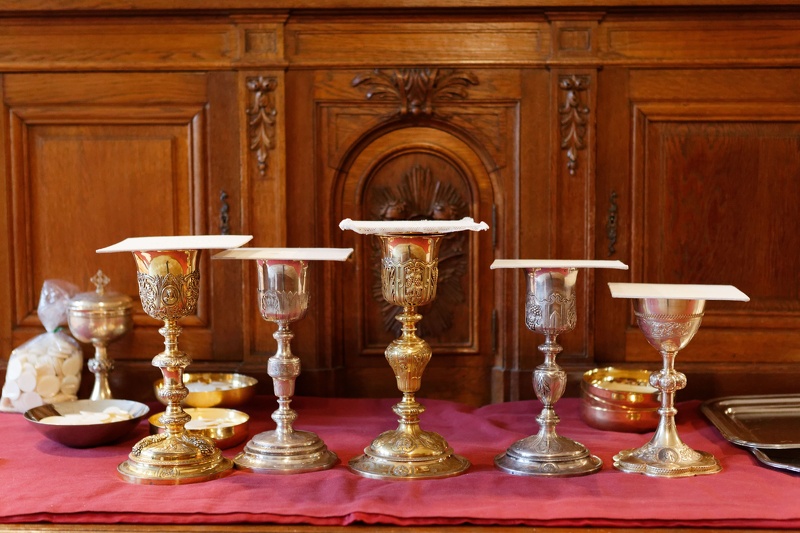
Essential supports of liturgy, the sacred vessels are intended to carry the Eucharistic species (bread and wine) before, during and after the celebration of mass. They are present in all churches and generally go by three:
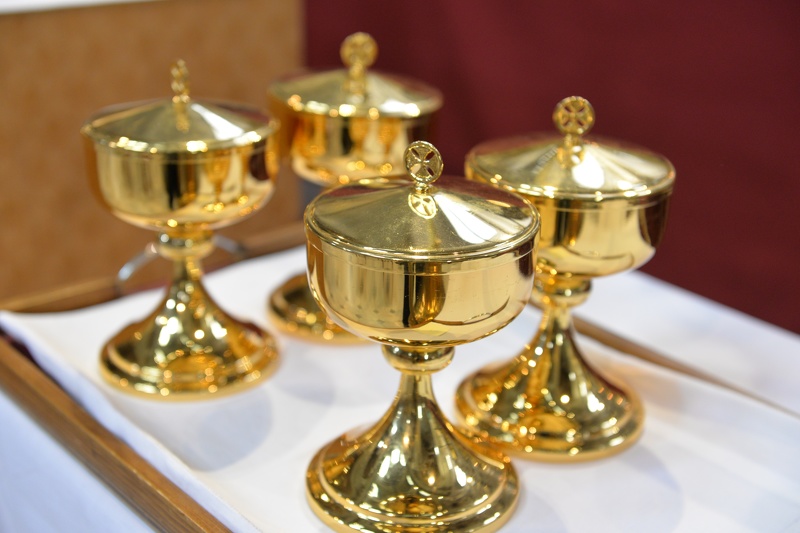
The ciborium is a cup topped by a lid and usually decorated with a cross. Placed in the tabernacle, it contains the hosts intended for the communion of the sick and, if required, for the communion of the faithful in addition to the hosts consecrated during mass.

The chalice is a flared cup in which the Eucharistic wine is consecrated.
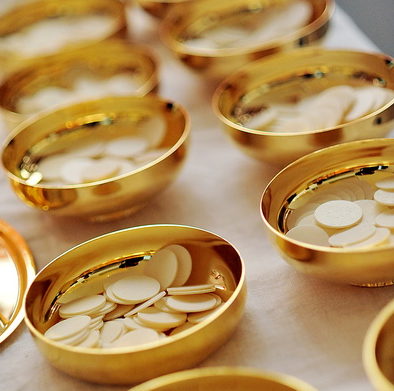
The paten is a small round dish intended to receive the large host that the priest shows to the people after the consecration. During mass, it is placed on the chalice.
In addition to these vessels are the ewers, chalice cloths and cruets used during mass by the clerics.
© Photos REUTERS / Philippe Wojazer, Diocèse de Paris